Synthesis of Substituted Oxo-Azepines by Regio- and Diastereoselective Hydroxylation
Abstract
:1. Introduction
2. Results
2.1. Synthesis of Silyl Ether 2
2.2. Hydroboration of (3S)-OTBS Tetrahydroazepine 2
2.3. Structural Assignment of (5S)-4a and (6R)-4b
2.4. DFT Analysis of (5S)-4a and (5R)-4a
2.5. Reagent and Catalyst Screen for the Hydroboration of 2
2.6. Synthesis and Structural Assignment of (3R)-OTBS-5/6-Oxo-Azepines 5a and 5b
3. Materials and Methods
3.1. General Methods
3.2. Synthetic Procedures
3.2.1. tert-Butyl(3S,4R)-4-(benzyloxy)-3-((tert-butyldimethylsilyl)oxy)-2,3,4,7-tetrahydro-1H-azepine-1-carboxylate (2)
3.2.2. tert-Butyl(3S,4R,5S)-4-(benzyloxy)-3-((tert-butyldimethylsilyl)oxy)-5-hydroxyazepane-1-carboxylate (3a); tert-Butyl(3S,4R,6S)-4-(benzyloxy)-3-((tert-butyldimethylsilyl)oxy)-5-hydroxyazepane-1-carboxylate (3b)
3.2.3. (3R,4R,5S)-4-(Benzyloxy)-3-((tert-butyldimethylsilyl)oxy)-5-hydroxyazepane ((5S)-4a)
3.2.4. (3R,4R,6S)-4-(Benzyloxy)-3-((tert-butyldimethylsilyl)oxy)-5-hydroxyazepane ((6R)-4b)
3.2.5. tert-Butyl (3S,4S)-4-(benzyloxy)-3-((tert-butyldimethylsilyl)oxy)-5-oxo-azepine-1-carboxylate (5a); tert-Butyl (3S,4S)-4-(benzyloxy)-3-((tert-butyldimethylsilyl)oxy)-6-oxo-azepine-1-carboxylate (5b)
3.2.6. (3S,4S)-4-(Benzyloxy)-3-((tert-butyldimethylsilyl)oxy)-5-oxoazepan-1-ium (6a)
3.2.7. (3S,4S)-4-(Benzyloxy)-3-((tert-butyldimethylsilyl)oxy)-6-oxoazepan-1-ium (6b)
3.2.8. tert-Butyl (3S,4R)-4-(benzyloxy)-3-((tert-butyldimethylsilyl)oxy)azepane-1-carboxylate (3e)
3.2.9. (3S,4R)-4-(Benzyloxy)-3-((tert-butyldimethylsilyl)oxy)azepan-1-ium (4c)
4. Conclusions
Supplementary Materials
Acknowledgments
Author Contributions
Conflicts of Interest
References
- Bouquet, J.; Bleriot, Y.; Desire, J.; King, D.T.; Vocadlo, D.J.; Vadlamani, G.; Benzie, G.R.; Mark, B.L.; Iorga, B.; Ide, D.; et al. Selective Trihydroxylated Azepane Inhibitors of NagZ, a Glycosidase Involved in Pseudomonas aeruginosa Resistance to β-Lactam Antibiotics. Org. Biomol. Chem. 2017. [Google Scholar] [CrossRef] [PubMed]
- Basak, R.K.; Vankar, Y.D. Synthesis and Comparative Study of Homoisofagomines and Analogues as Glycosidase Inhibitors. Eur. J. Org. Chem. 2014, 2014, 844–859. [Google Scholar] [CrossRef]
- Li, H.; Zhang, Y.; Favre, S.; Vogel, P.; Sollogoub, M.; Bleriot, Y. Synthesis of Branched Seven-Membered 1-N-Imino-Sugars and Their Evaluation as Glycosidase Inhibitors. Carbohydr. Res. 2012, 356, 110–114. [Google Scholar] [CrossRef] [PubMed]
- Kalamkar, N.B.; Kasture, V.M.; Chavan, S.T.; Sabharwal, S.G.; Dhavale, D.D. Concise and Practical Route to Tri- and Tetra-Hydroxy Seven-Membered Imino-Cyclitols as Glycosidase Inhibitors from D-(+)-Glucurono-γ-Lactone. Tetrahedron 2010, 66, 8522–8526. [Google Scholar] [CrossRef]
- Shih, T.-L.; Yang, R.-Y.; Li, S.-T.; Chiang, C.-F.; Lin, C.-H. Expeditious Synthesis of Tri- and Tetrahydroxyazepanes from D-(-)-Quinic Acid as Potent Glycosidase Inhibitors. J. Org. Chem. 2007, 72, 4258–4261. [Google Scholar] [CrossRef] [PubMed]
- Parker, L.J.; Watanabe, H.; Tsuganezawa, K.; Tomabechi, Y.; Handa, N.; Shirouzu, M.; Yuki, H.; Honma, T.; Ogawa, N.; Nagano, T. Flexibility of the P-Loop of Pim-1 Kinase: Observation of a Novel Conformation Induced by Interaction With an Inhibitor. Acta Crystallogr. Sec. F Struct. Biol. Cryst. Commun. 2012, 68, 860–866. [Google Scholar] [CrossRef] [PubMed]
- Yamashita, D.S.; Marquis, R.W.; Xie, R.; Nidamarthy, S.D.; Oh, H.-J.; Jeong, J.U.; Erhard, K.F.; Ward, K.W.; Roethke, T.J.; Smith, B.R. Structure Activity Relationships of 5-, 6-, and 7-Methyl-Substituted Azepan-3-one Cathepsin K Inhibitors. J. Med. Chem. 2006, 49, 1597–1612. [Google Scholar] [CrossRef] [PubMed]
- Breitenlechner, C.B.; Wegge, T.; Berillon, L.; Graul, K.; Marzenell, K.; Friebe, W.-G.; Thomas, U.; Schumacher, R.; Huber, R.; Engh, R.A. Structure-Based Optimization of Novel Azepane Derivatives as PKB Inhibitors. J. Med. Chem. 2004, 47, 1375–1390. [Google Scholar] [CrossRef] [PubMed]
- Cipolla, L.; Araújo, A.C.; Airoldi, C.; Bini, D. Pyrrolo [2,1-c][1,4] Benzodiazepine as a Scaffold for the Design and Synthesis of Anti-Tumour Drugs. Anti Cancer Agents Med. Chem. Former. Curr. Med. Chem. Anti Cancer Agents 2009, 9, 1–31. [Google Scholar] [CrossRef]
- Rajanarendar, E.; Reddy, M.N.; Krishna, S.R.; Reddy, K.G.; Reddy, Y.; Rajam, M. Design, Synthesis, in vitro Antimicrobial and Anticancer Activity of Novel Methylenebis-isoxazolo[4,5-b]azepines Derivatives. Eur. J. Med. Chem. 2012, 50, 344–349. [Google Scholar] [CrossRef] [PubMed]
- Smid, P.; Mlinaric, M.; Koehler, K.F.; Nunez Garcia, S.; Wegener, E.; Lange, J.H.M. Spiro Azepane-Oxazolidinones as Kv1.3 Potassium Channel Blockers. US8575148B2, 18 October 2010. [Google Scholar]
- Uchikawa, O.; Sakai, N.; Terao, Y.; Suzuki, H. Preparation of Fused Heterocyclic Compounds as Apoptosis Signal Regulating Kinase 1 (ASK1) inhibitors. WO2008016131A1, 7 February 2008. [Google Scholar]
- Anderson, K.W.; Fotouhi, N.; Gillespie, P.; Goodnow, R.A., Jr.; Guertin, K.R.; Haynes, N.-E.; Myers, M.P.; Pietranico-Cole, S.L.; Qi, L.; Rossman, P.L.; et al. Preparation of Pyrazole-4-Carboxamide Derivatives as 11-β-Hydroxysteroid Dehydrogenase Form I (11-β-HSD1) Inhibitors. WO2007107470A2, 27 September 2007. [Google Scholar]
- Brummerhop, H.; Frick, W.; Glombik, H.; Plettenburg, O.; Bickel, M.; Heuer, H.; Theis, S. Synthesis of Fluoro-Glycoside Derivatives of Pyrazoles for Use in Treatment of Diabetes or For Lowering Blood Sugar Levels. WO2005121161A1, 22 December 2005. [Google Scholar]
- Ammenn, J.; Gillig, J.R.; Heinz, L.J.; Hipskind, P.A.; Kinnick, M.D.; Lai, Y.-S.; Morin, J.M., Jr.; Nixon, J.A.; Ott, C.; Savin, K.A.; et al. Preparation of 1,3,4-Oxadiazoles and Related Compounds for Use as Melanin Concentrating Hormone Antagonists in the Treatment of Obesity and Diabetes. WO2003097047A1, 27 November 2003. [Google Scholar]
- Hartman, G.D.; Kuduk, S. Preparation of Azepane Derivatives and Methods of Treating Hepatitis B Infections. WO2015109130A1, 23 July 2015. [Google Scholar]
- Wilson, F.X.; Nash, R.J.; Horne, G.; Storer, R.; Tinsley, J.M.; Roach, A.G. Compounds, Including Alkaloids and Iminosugars, for the Treatment of Flaviviral Infections. WO2010015815A2, 26 August 2010. [Google Scholar]
- Núñez-Villanueva, D.; Infantes, L.; García-López, M.T.; González-Muñiz, R.; Martín-Martínez, M. Azepane Quaternary Amino Acids As Effective Inducers of 310 Helix Conformations. J. Org. Chem. 2012, 77, 9833–9839. [Google Scholar] [CrossRef] [PubMed]
- Kamal, A.; Reddy, D.R.; Reddy, P.M.M. Synthesis and DNA-Binding Ability of Pyrrolo[2,1-c][1,4]benzodiazepine-Azepane Conjugates. Bioorg. Med. Chem. Lett. 2006, 16, 1160–1163. [Google Scholar] [CrossRef] [PubMed]
- Johnson, H.A.; Thomas, N.R. Polyhydroxylated Azepanes as New Motifs for DNA Minor Groove Binding Agents. Bioorg. Med. Chem. Lett. 2002, 12, 237–241. [Google Scholar] [CrossRef]
- Psarra, V.; Fousteris, M.A.; Hennig, L.; Bantzi, M.; Giannis, A.; Nikolaropoulos, S.S. Identification of Azepinone Fused Tetracyclic Heterocycles as New Chemotypes with Protein Kinase Inhibitory Activities. Tetrahedron 2016, 72, 2376–2385. [Google Scholar] [CrossRef]
- Pellegrino, S.; Bonetti, A.; Clerici, F.; Contini, A.; Moretto, A.; Soave, R.; Gelmi, M.L. 1H-Azepine-2-oxo-5-amino-5-carboxylic Acid: A 310 Helix Inducer and an Effective Tool for Functionalized Gold Nanoparticles. J. Org. Chem. 2015, 80, 5507–5516. [Google Scholar] [CrossRef] [PubMed]
- Pellegrino, S.; Contini, A.; Clerici, F.; Gori, A.; Nava, D.; Gelmi, M.L. 1H-Azepine-4-amino-4-carboxylic Acid: A New α,α-Disubstituted Ornithine Analogue Capable of Inducing Helix Conformations in Short Ala-Aib Pentapeptides. Chem. Eur. J. 2012, 18, 8705–8715. [Google Scholar] [CrossRef] [PubMed]
- Draghici, C.; Wang, T.; Spiegel, D.A. Concise Total Synthesis of Glucosepane. Science 2015, 350, 294–298. [Google Scholar] [CrossRef] [PubMed]
- Andersen, S.M.; Ekhart, C.; Lundt, I.; Stutz, A.E. Syntheses of Sugar-Related Trihydroxyazepanes from Simple Carbohydrates and Their Activities as Reversible Glycosidase Inhibitors. Carbohydr. Res. 2000, 326, 22–33. [Google Scholar] [CrossRef]
- Shih, T.-L.; Liang, M.-T.; Wu, K.-D.; Lin, C.-H. Synthesis of polyhydroxy 7- and N-alkyl-azepanes as potent glycosidase inhibitors. Carbohydr. Res. 2011, 346, 183–190. [Google Scholar] [CrossRef] [PubMed]
- Otero, J.M.; Estevez, A.M.; Soengas, R.G.; Estevez, J.C.; Nash, R.J.; Fleet, G.W.J.; Estevez, R.J. Studies on the Transformation of Nitro-Sugars into Branched Chain Imino-Sugars. Part II: Synthesis of (3R,4R,5R,6S)-2,2-bis(hydroxymethyl)azepane-3,4,5,6-tetraol. Tetrahedron Asymmetry 2008, 19, 2443–2446. [Google Scholar] [CrossRef]
- Dhavale, D.D.; Markad, S.D.; Karanjule, N.S.; PrakashaReddy, J. Asymmetric Dihydroxylation of D-Glucose Derived α,β-Unsaturated Ester: Synthesis of Azepane and Nojirimycin Analogues. J. Org. Chem. 2004, 69, 4760–4766. [Google Scholar] [CrossRef] [PubMed]
- Dhavale, D.D.; Chaudhari, V.D.; Tilekar, J.N. An Expeditious Synthesis of a (3S,4S,5R)-Trihydroxyazepane. Tetrahedron Lett. 2003, 44, 7321–7323. [Google Scholar] [CrossRef]
- Zamoner, L.O.B.; Aragao-Leoneti, V.; Mantoani, S.P.; Rugen, M.D.; Nepogodiev, S.A.; Field, R.A.; Carvalho, I. CuAAC Click Chemistry with N-Propargyl-1,5-dideoxy-1,5-imino-d-gulitol and N-propargyl 1,6-dideoxy-1,6-imino-d-mannitol Provides Access to Triazole-Linked Piperidine and Azepane Pseudo-Disaccharide Iminosugars Displaying Glycosidase Inhibitory Properties. Carbohydr. Res. 2016, 429, 29–37. [Google Scholar] [CrossRef] [PubMed]
- Adams, C.; Fairway, S.; Hardy, C.; Hibbs, D.; Hursthouse, M.; Morley, A.; Sharp, B.; Vicker, N.; Warner, I. Total Synthesis of Balanol: A Potent Protein Kinase C Inhibitor of Fungal Origin. J. Chem. Soc. Perkin Trans. 1995, 2355–2362. [Google Scholar] [CrossRef]
- Fürstner, A.; Thiel, O.R. Formal Total Synthesis of (-)-Balanol: Concise Approach to the Hexahydroazepine Segment Based on RCM. J. Org. Chem. 2000, 65, 1738–1742. [Google Scholar] [CrossRef] [PubMed]
- Goumain, S.; Taghzouti, H.; Portella, C.; Behr, J.-B.; Plantier-Royon, R. Convenient Strategy for the Synthesis of Highly Functionalizable Hydroxylated Unsaturated Azepanes. Tetrahedron Lett. 2012, 53, 4440–4443. [Google Scholar] [CrossRef]
- Li, H.; Bleriot, Y.; Chantereau, C.; Mallet, J.-M.; Sollogoub, M.; Zhang, Y.; Rodriguez-Garcia, E.; Vogel, P.; Jimenez-Barbero, J.; Sinay, P. The First Synthesis of Substituted Azepanes Mimicking Monosaccharides: A New Class of Potent Glycosidase Inhibitors. Org. Biomol. Chem. 2004, 2, 1492–1499. [Google Scholar] [CrossRef] [PubMed]
- Moutel, S.; Shipman, M.; Martin, O.R.; Ikeda, K.; Asano, N. Synthesis of a Trihydroxylated Azepane from D-Arabinose By Way of an Intramolecular Alkene Nitrone Cycloaddition. Tetrahedron Asymmetry 2005, 16, 487–491. [Google Scholar] [CrossRef]
- Li, H.; Zhang, Y.; Vogel, P.; Sinay, P.; Bleriot, Y. Tandem Staudinger-azaWittig Mediated Ring Expansion: Rapid Access to New Isofagomine-Tetrahydroxyazepane Hybrids. Chem. Commun. 2007, 183–185. [Google Scholar] [CrossRef] [PubMed]
- Patel, A.R.; Ball, G.; Hunter, L.; Liu, F. Conformational Regulation of Substituted Azepanes Through Selective Monofluorination. Org. Biomol. Chem. 2013, 11, 3781–3785. [Google Scholar] [CrossRef] [PubMed]
- Patel, A.R.; Hunter, L.; Bhadbhade, M.M.; Liu, F. Conformational Regulation of Substituted Azepanes through Mono-, Di-, and Trifluorination. Eur. J. Org. Chem. 2014, 2014, 2584–2593. [Google Scholar] [CrossRef]
- Patel, A.R.; Liu, F. Diastereospecific Fluorination of Substituted Azepanes. Tetrahedron 2013, 69, 744–752. [Google Scholar] [CrossRef]
- Corey, E.; Cho, H.; Rücker, C.; Hua, D.H. Studies with Trialkylsilyltriflates: New Syntheses and Applications. Tetrahedron Lett. 1981, 22, 3455–3458. [Google Scholar] [CrossRef]
- Corey, E.; Venkateswarlu, A. Protection of Hydroxyl Groups as tert-Butyldimethylsilyl Derivatives. J. Am. Chem. Soc. 1972, 94, 6190–6191. [Google Scholar] [CrossRef]
- Molecular Operating Environment (MOE); 2016.08; Chemical Computing Group Inc.: Montreal, QC, Canada, 2016.
- TURBOMOLE, V7.1; University of Karlsruhe and Forschungszentrum Karlsruhe GmbH: Karlsruhe, Germany, 2016.
- Männig, D.; Nöth, H. Catalytic Hydroboration with Rhodium Complexes. Angew. Chem. Int. Ed. Engl. 1985, 24, 878–879. [Google Scholar] [CrossRef]
- Evans, D.A.; Fu, G.C.; Hoveyda, A.H. Rhodium (I)-Catalyzed Hydroboration of Olefins. The Documentation of Regio-and Stereochemical Control in Cyclic and Acyclic systems. J. Am. Chem. Soc. 1988, 110, 6917–6918. [Google Scholar] [CrossRef]
- Westcott, S.A.; Blom, H.P.; Marder, T.B.; Baker, R.T. New Homogeneous Rhodium Catalysts for the Regioselective Hydroboration of Alkenes. J. Am. Chem. Soc. 1992, 114, 8863–8869. [Google Scholar] [CrossRef]
- Evans, D.A.; Fu, G.C.; Hoveyda, A.H. Rhodium (I)-and Iridium (I)-Catalyzed Hydroboration Reactions: Scope and Synthetic Applications. J. Am. Chem. Soc. 1992, 114, 6671–6679. [Google Scholar] [CrossRef]
- Burgess, K.; Cassidy, J.; Ohlmeyer, M.J. Substrate-Controlled Diastereoselectivities in Catalyzed and Uncatalyzed Hydroborations of Acyclic Allylic Alcohol Derivatives: Secondary Orbital Effects Involving d.π-p.π. Interactions. J. Org. Chem. 1991, 56, 1020–1027. [Google Scholar] [CrossRef]
- Burgess, K.; Ohlmeyer, M.J. Diastereocontrol in Rhodium-Catalyzed Hydroboration of Chiral Acyclic Allylic Alcohol Derivatives. Tetrahedron Lett. 1989, 30, 395–398. [Google Scholar] [CrossRef]
- Harder, S.; Spielmann, J. Calcium-Mediated Hydroboration of Alkenes: “Trojan horse” or “True” Catalysis? J. Organomet. Chem. 2012, 698, 7–14. [Google Scholar] [CrossRef]
- Crudden, C.M.; Edwards, D. Catalytic Asymmetric Hydroboration: Recent Advances and Applications in Carbon-Carbon Bond-Forming Reactions. Eur. J. Org. Chem. 2003, 2003, 4695–4712. [Google Scholar] [CrossRef]
- Beletskaya, I.; Pelter, A. Hydroborations Catalysed by Transition Metal Complexes. Tetrahedron 1997, 53, 4957–5026. [Google Scholar] [CrossRef]
- Burgess, K.; Ohlmeyer, M.J. Transition-Metal Promoted Hydroborations of Alkenes, Emerging Methodology for Organic Transformations. Chem. Rev. 1991, 91, 1179–1191. [Google Scholar] [CrossRef]
- Carroll, A.-M.; O’Sullivan, T.P.; Guiry, P.J. The Development of Enantioselective Rhodium-Catalyzed Hydroboration of Olefins. Adv. Synth. Catal. 2005, 347, 609–631. [Google Scholar] [CrossRef]
- Yamamoto, Y.; Fujikawa, R.; Umemoto, T.; Miyaura, N. Iridium-Catalyzed Hydroboration of Alkenes with Pinacolborane. Tetrahedron 2004, 60, 10695–10700. [Google Scholar] [CrossRef]
- Lata, C.J.; Crudden, C.M. Dramatic Effect of Lewis Acids on the Rhodium-Catalyzed Hydroboration of Olefins. J. Am. Chem. Soc. 2009, 132, 131–137. [Google Scholar] [CrossRef] [PubMed]
- Noh, D.; Chea, H.; Ju, J.; Yun, J. Highly Regio-and Enantioselective Copper-Catalyzed Hydroboration of Styrenes. Angew. Chem. Int. Ed. Engl. 2009, 48, 6062–6064. [Google Scholar] [CrossRef] [PubMed]
- Noh, D.; Yoon, S.K.; Won, J.; Lee, J.Y.; Yun, J. An Efficient Copper (I)-Catalyst System for the Asymmetric Hydroboration of β-Substituted Vinylarenes with Pinacolborane. Chem. Asian J. 2011, 6, 1967–1969. [Google Scholar] [CrossRef] [PubMed]
Sample Availability: Samples of the compounds are not available from the authors. |



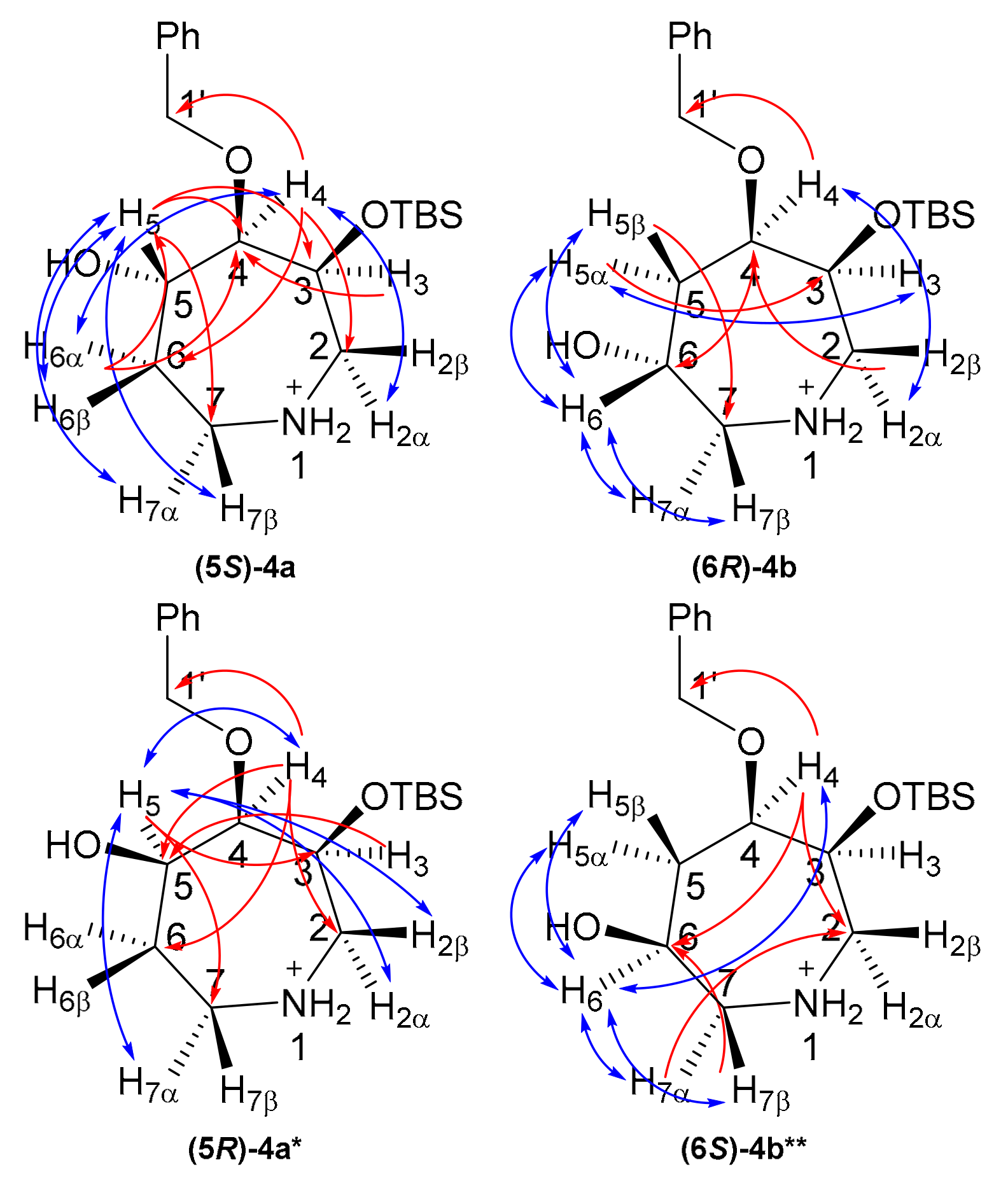
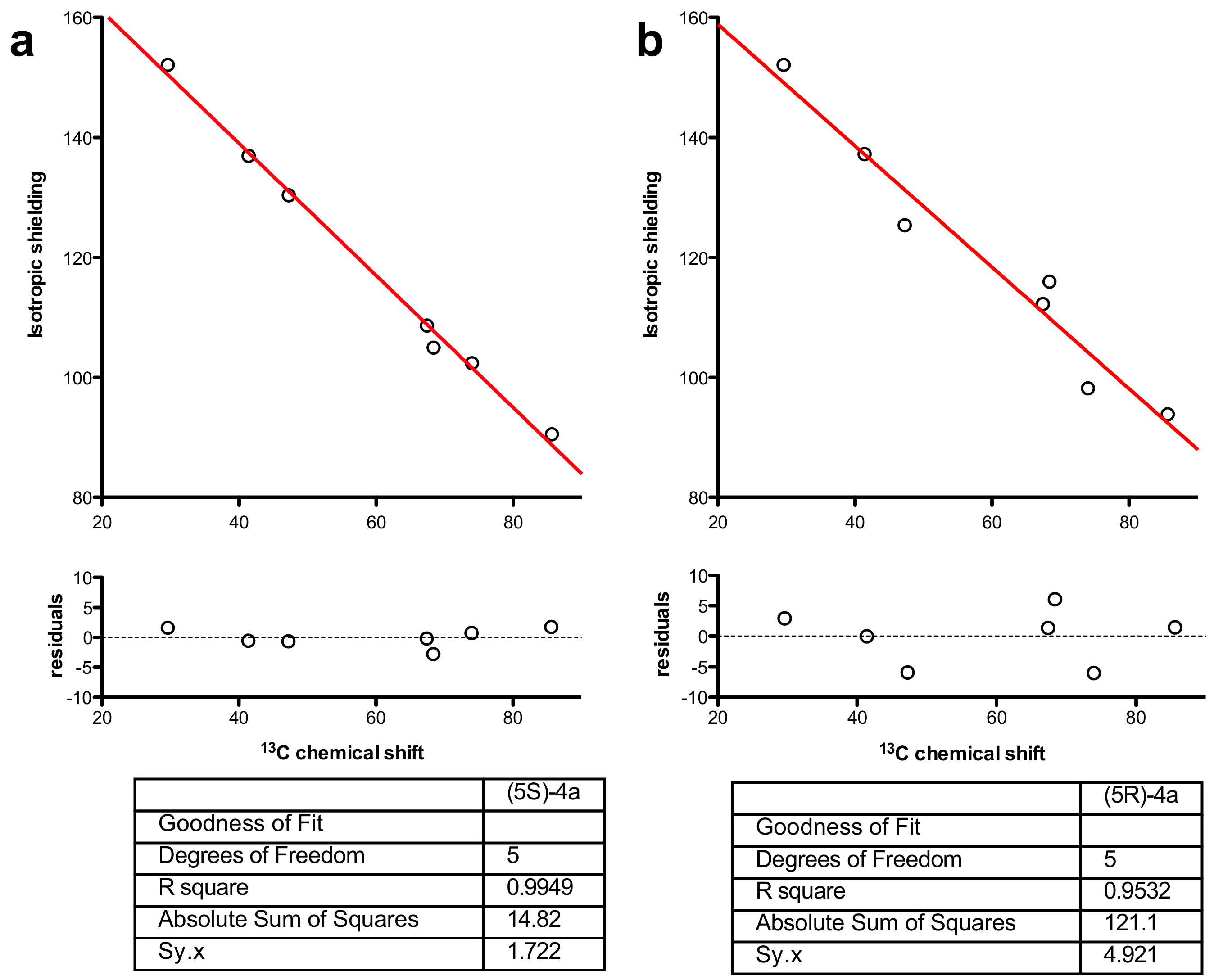

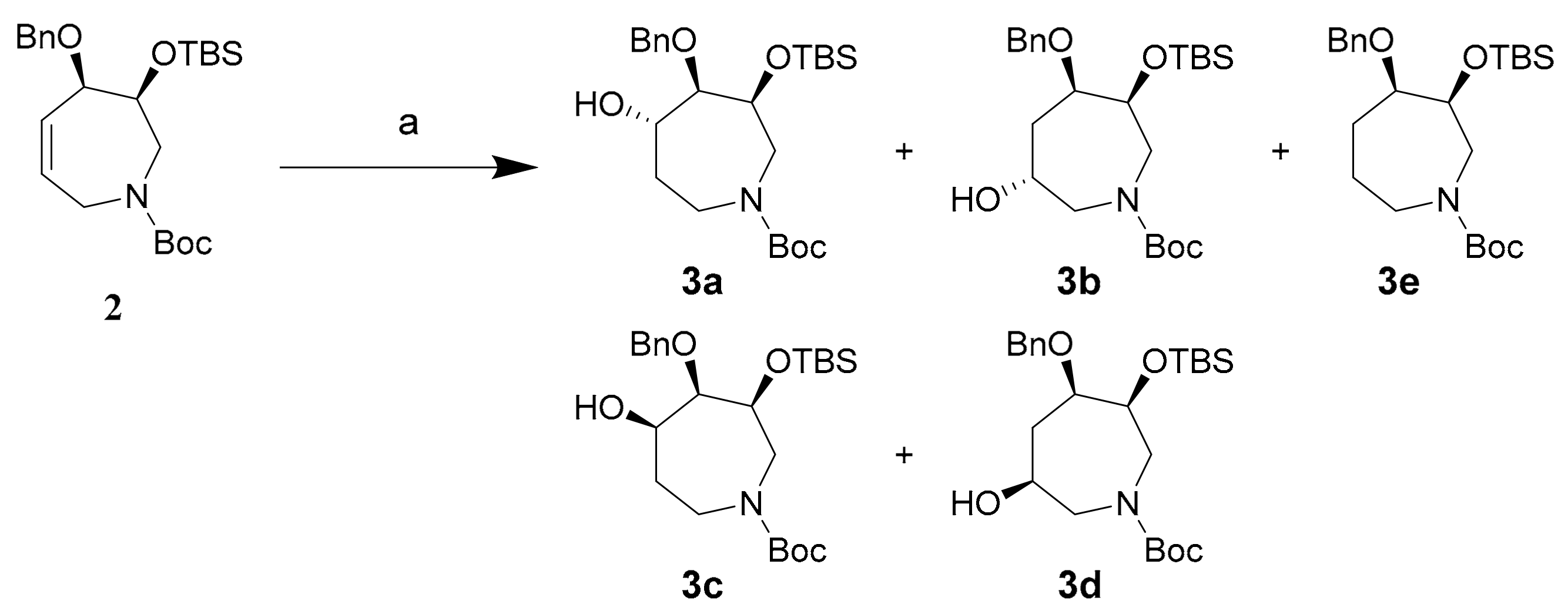
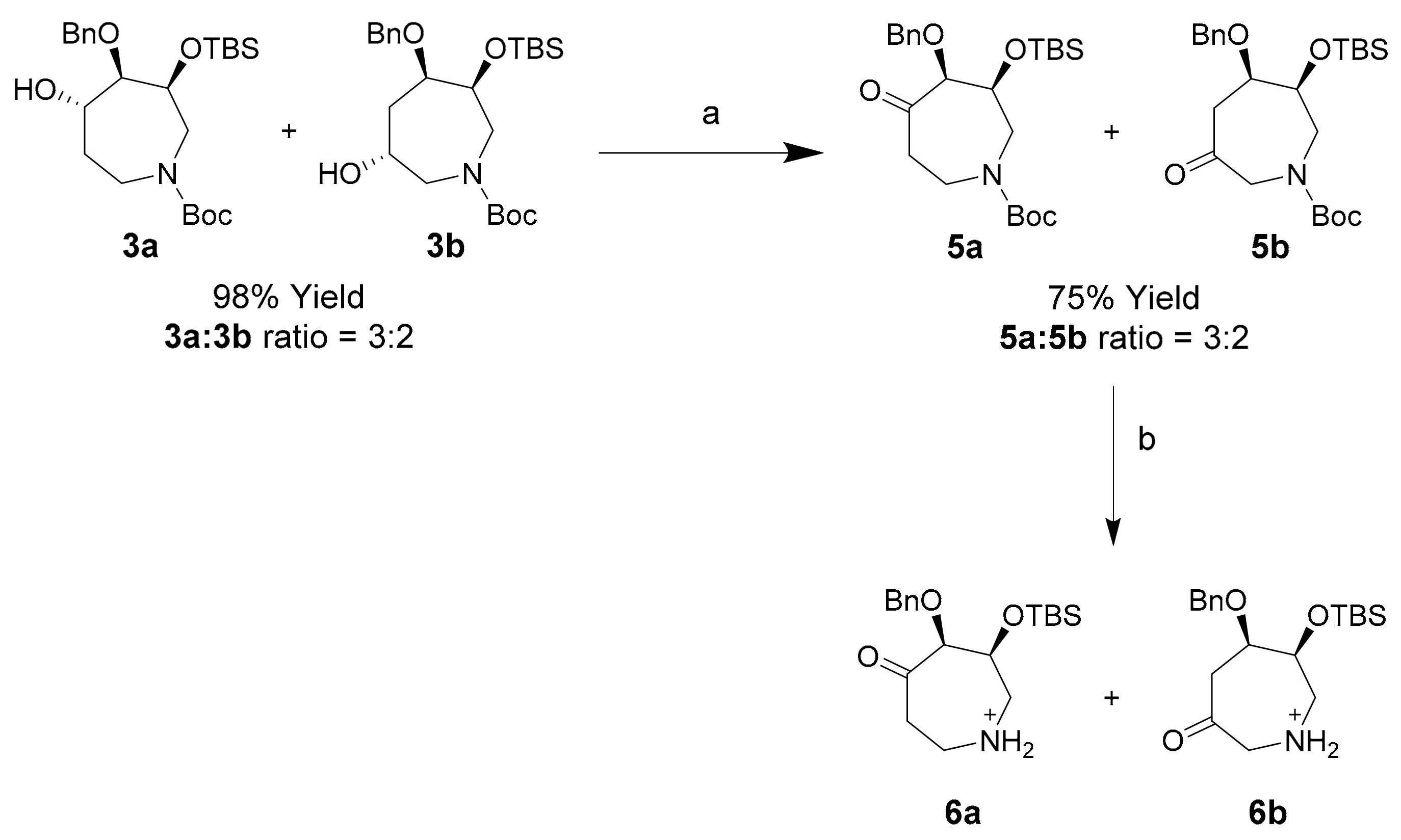
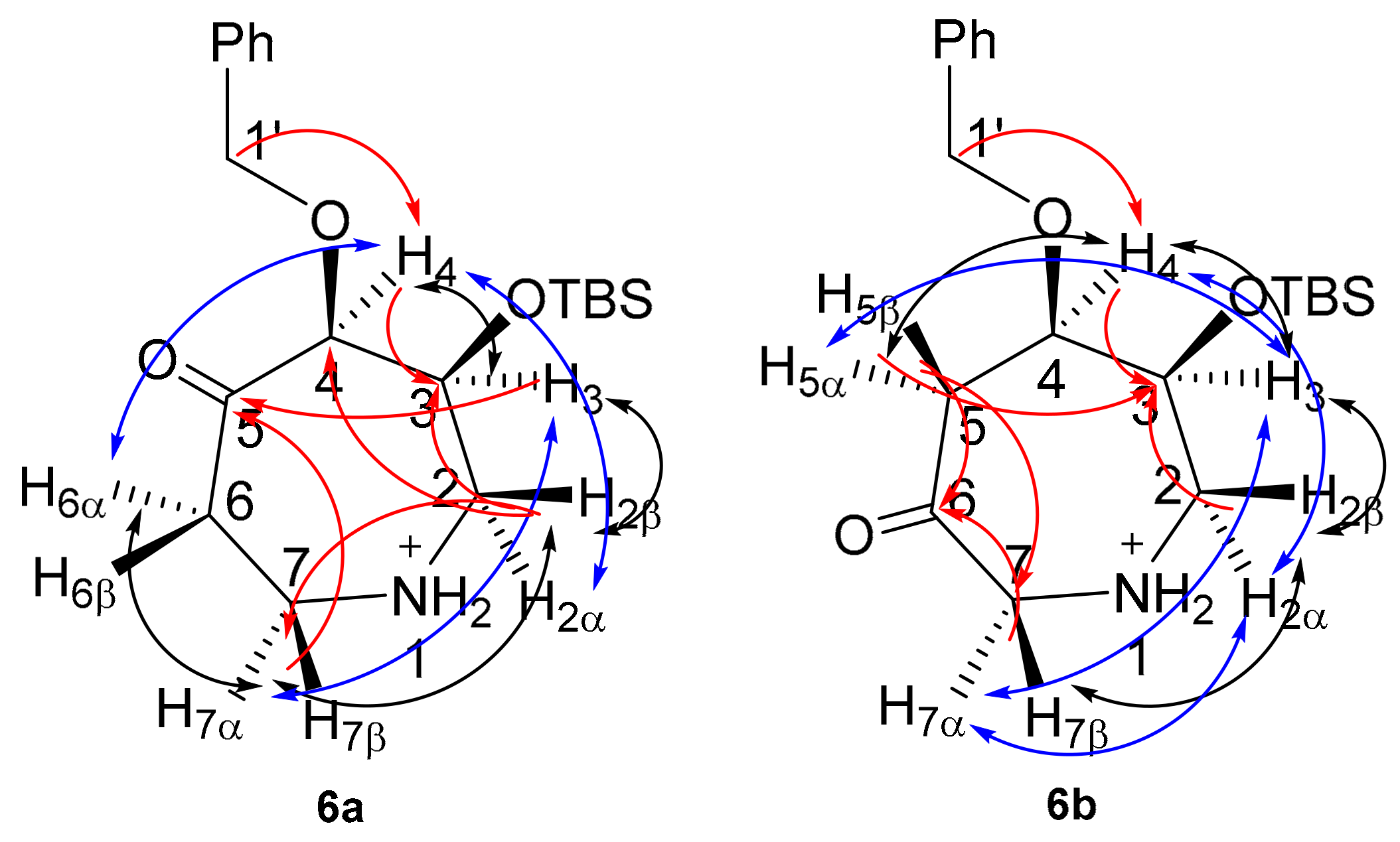
| Entry | Conditions | Conversion (%) | Ratio c | ||
|---|---|---|---|---|---|
| 3a | 3b | 3e | |||
| 1 | BH3∙SMe2, 25 °C, 18 h | 99 | 58 | 42 | 0 |
| 2 | BH3∙THF, 25 °C, 18 h | 4.3 b | 69 | 31 | 0 |
| 3 | BH3∙NMe3, 66 °C, 18 h | 0 b | 0 | 0 | 0 |
| 4 | CatBH, 66 °C, 18 h | 0 b | 0 | 0 | 0 |
| 5 a | CatBH, 66 °C, 18 h | 100 | 0 | 0 | 100 |
| 6 | 9-BBN, 66 °C, 18 h | 0 b | 0 | 0 | 0 |
| 7 | PinBH, 25 °C, 18 h | 0 b | 0 | 0 | 0 |
| Entry | Conditions | Conversion (%) | Ratio b | ||
|---|---|---|---|---|---|
| 3a | 3b | 3e | |||
| 1 | CatBH, 5 mol % Ir(COD)(PCy3)(Py)PF6, THF, 66 °C, 18 h | 44 a | 0 | 0 | 100 |
| 2 | PinBH, 5 mol % Rh(COD)(DPPB)BF4, DCE, 25 °C, 18 h | 75 a | 5 | 34 | 61 |
| 3 | PinBH, 5 mol % Rh(COD)(DPPB)BF4, 2 mol % FAB, DCE, 66 °C, 18 h | 58 a | 2 | 8 | 90 |
| 4 | PinBH, 3 mol % CuCl, 3.3 mol % TangPhos, 6 mol % NaOtBu, toluene, 66 °C, 18 h | 0 a | 0 | 0 | 0 |
| 5 | PinBH, 3 mol % CuCl, 3.3 mol % (R)-DTBM SegPhos, 6 mol % NaOtBu, toluene, 66 °C, 18 h | 0 a | 0 | 0 | 0 |
| Entry | Conditions | Conversion (%) | Ratio b | ||
|---|---|---|---|---|---|
| 3a | 3b | 3e | |||
| 1 | DCE, 60 °C, 18 h | 70 | 7 | 54 | 39 |
| 2 a | DCE, 60 °C, 18 h | 37 | 3 | 14 | 83 |
| 3 | THF, 25 °C, 18 h | 99 | 8 | 48 | 44 |
| 4 | THF, 60 °C, 18 h | 99 | 8 | 58 | 34 |
| 5 | Toluene, 25 °C, 18 h | 98 | 5 | 39 | 56 |
| 6 | Toluene, 60 °C, 18 h | 100 | 6 | 44 | 50 |
| 7 a | Toluene, 60 °C, 18 h | 44 | 11 | 57 | 32 |
© 2017 by the authors. Licensee MDPI, Basel, Switzerland. This article is an open access article distributed under the terms and conditions of the Creative Commons Attribution (CC BY) license (http://creativecommons.org/licenses/by/4.0/).
Share and Cite
Spedding, H.; Karuso, P.; Liu, F. Synthesis of Substituted Oxo-Azepines by Regio- and Diastereoselective Hydroxylation. Molecules 2017, 22, 1871. https://doi.org/10.3390/molecules22111871
Spedding H, Karuso P, Liu F. Synthesis of Substituted Oxo-Azepines by Regio- and Diastereoselective Hydroxylation. Molecules. 2017; 22(11):1871. https://doi.org/10.3390/molecules22111871
Chicago/Turabian StyleSpedding, Harold, Peter Karuso, and Fei Liu. 2017. "Synthesis of Substituted Oxo-Azepines by Regio- and Diastereoselective Hydroxylation" Molecules 22, no. 11: 1871. https://doi.org/10.3390/molecules22111871
APA StyleSpedding, H., Karuso, P., & Liu, F. (2017). Synthesis of Substituted Oxo-Azepines by Regio- and Diastereoselective Hydroxylation. Molecules, 22(11), 1871. https://doi.org/10.3390/molecules22111871






